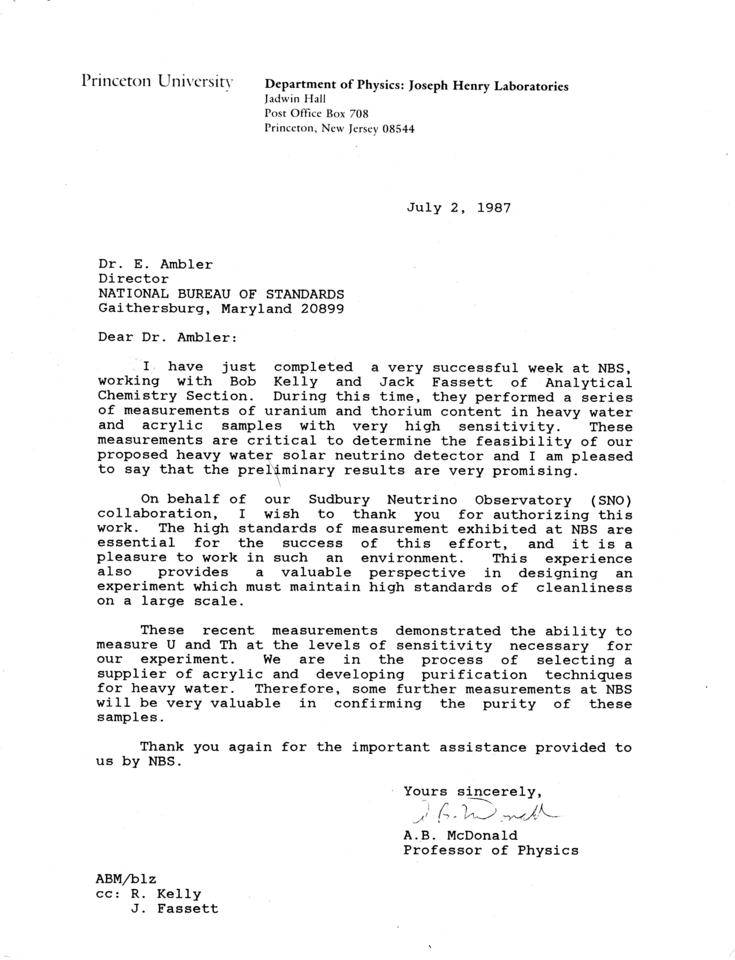Other NIST Connections to the Nobel Prize
Marie Skłodowska-Curie
- 1903 Nobel Prize in Physics (with Pierre Curie) "for their joint researches on the radiation phenomena discovered by Professor Henri Becquerel."
- 1911 Nobel Prize in Chemistry "[for] the discovery of the elements radium and polonium, by the isolation of radium and the study of the nature and compounds of this remarkable element."
Marie Curie, one of the most important scientists of all time, has had a direct impact on the history of NIST. Starting in 1910, she played an important role in developing international standards for samples that contained the radioactive element radium, which she discovered with her late husband Pierre Curie. The primary international standard was kept in Paris. Curie calibrated seven radium samples that would serve as secondary standards for national laboratories around the world. One of these samples, containing 20.28 milligrams of radium chloride, was delivered in 1913 to NIST, then known as the National Bureau of Standards (NBS). NIST became the holder of the primary radium standard in the United States. NIST still possesses the 1913 radium specimen, the last surviving specimen of its kind from Marie Curie.
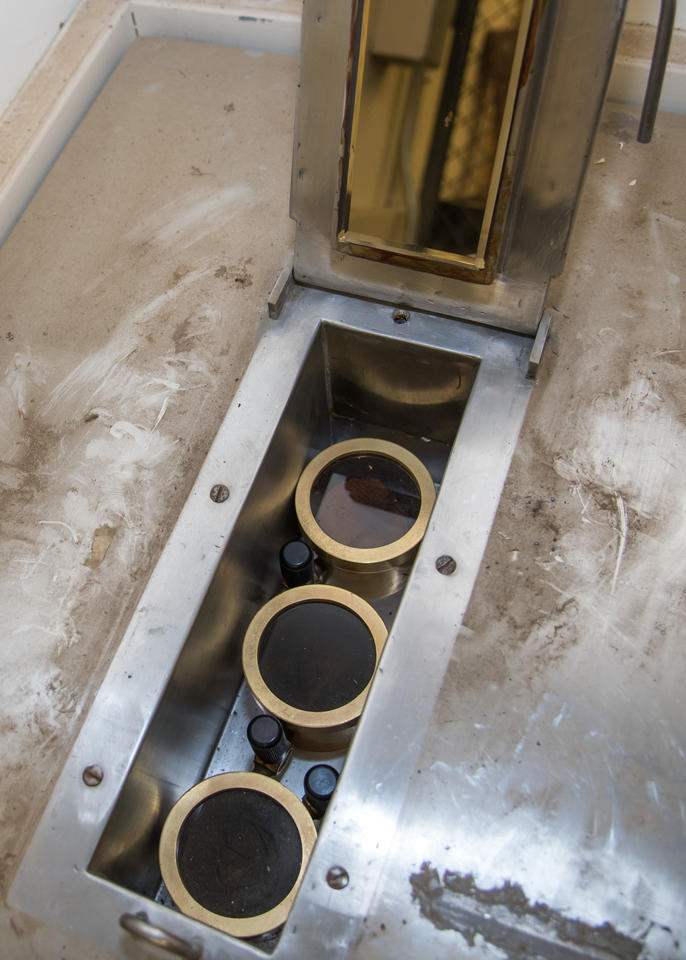
Eight years later, in 1921, Curie visited the U.S. to receive a gift of a gram of radium. It had become very expensive by the time, and the sample from the U.S. would help her continue her research. Curie attended a White House ceremony for the gift, and visited NBS, which calibrated the radium before it was shipped to Curie’s laboratory in France.
Accompanying Marie on the 1921 visit to the U.S. was her daughter, Irene, who would later go on to receive the 1935 Nobel Prize in Chemistry. Irene visited NBS in May 1921 with Marie. In 1936, Irene Joliot-Curie corresponded with NBS about the second set of radium standards that the Curies provided to the agency and signed the certificates for those two standards.
- Learn more about Marie Curie and the NBS Radium Standards.
- Read a blog post about Saving Marie Curie's Last Radium Standard.
Ernest Rutherford
- 1908 Nobel Prize in Chemistry for "for his investigations into the disintegration of the elements, and the chemistry of radioactive substances."
One of the greatest scientific pioneers of all time, physicist Ernest Rutherford developed important personal and professional relationships with NIST scientists in connection with his Nobel Prize-winning research. One of the atoms that Rutherford studied widely in the years leading up to the Nobel Prize was the radioactive element radium, including samples that he received from Marie Curie in France. As president of the International Radium Standards Commission, Rutherford corresponded with NIST from 1918-1937 on matters relating to the radium standards he certified in 1913 and 1935. NIST scientists regarded him so highly and with such great fondness that they proposed (unsuccessfully) the Rutherford (rd) as a unit of radioactivity.
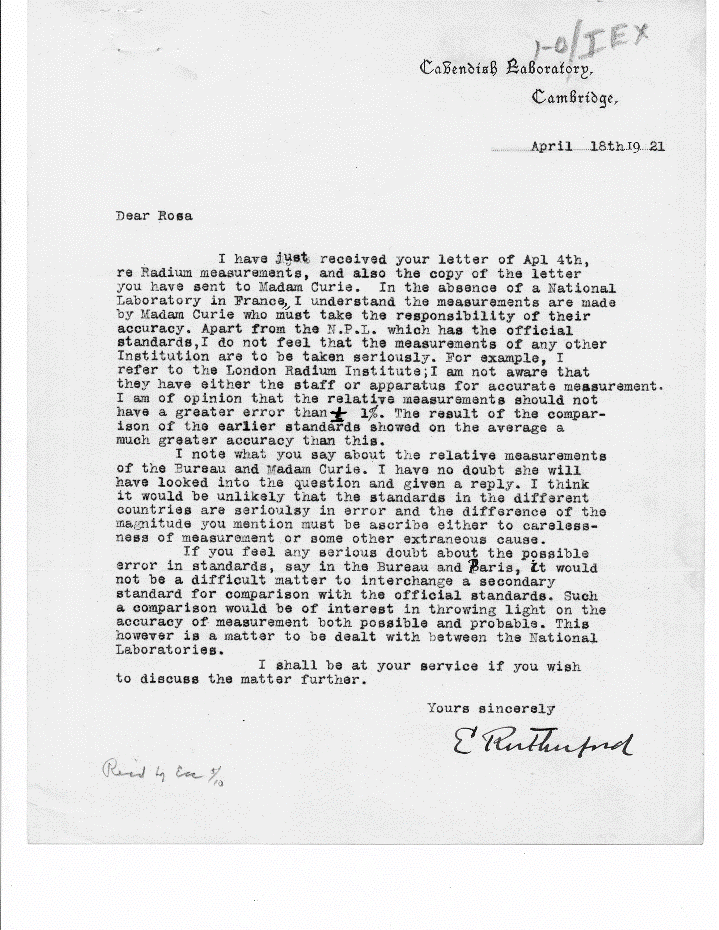
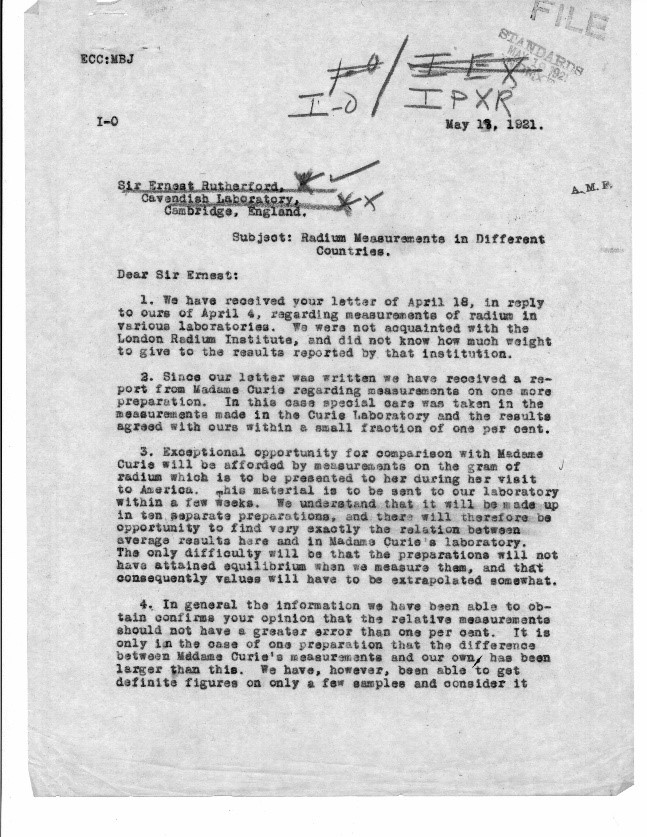
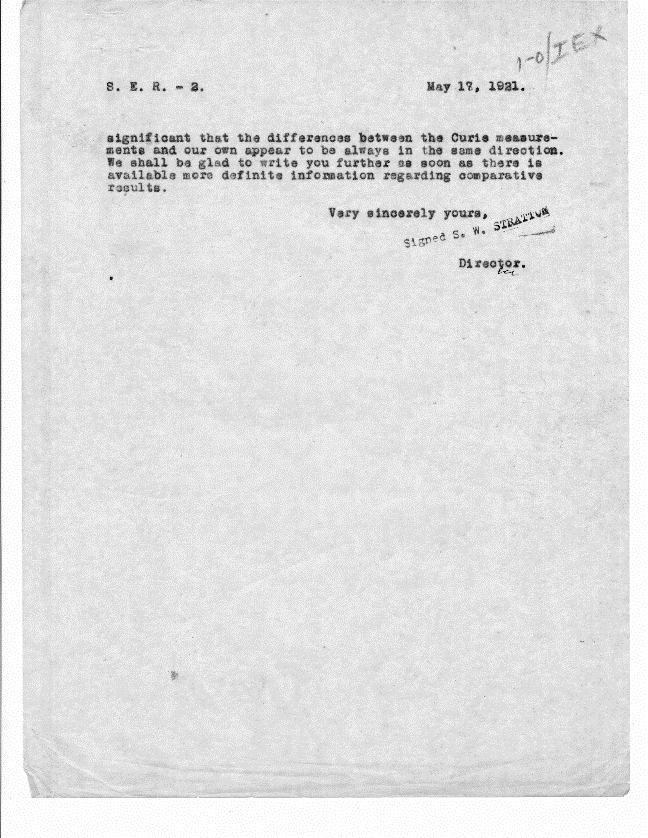
An April 1921 letter from Ernest Rutherford on measurements of radium to Edward Bennett Rosa, the chief physicist for the National Bureau of Standards, which later became NIST, with a May 1921 reply from Samuel Stratton, the agency’s first director. The letters also mention NIST’s ongoing collaborations with Marie Curie.
Harold Clayton Urey
- 1934 Nobel Prize in Chemistry for “his discovery of heavy hydrogen.”
On Thanksgiving Day 1931, Columbia University researchers Harold Urey and George Murphy measured the spectrum of radiation from a gas of hydrogen they had received via express rail from NIST. While most hydrogen nuclei contain a single proton, Urey’s analysis uncovered the presence of a heavy version, or “isotope,” of hydrogen, known as deuterium, which also contains a neutron in its nucleus. The gas sample he used to make this discovery was from distilled liquid hydrogen prepared by NIST physicist Ferdinand G. Brickwedde. In 1932, Edward Wight Washburn, NIST’s chief chemist, introduced a method for electrically separating deuterium from hydrogen in water, enabling deuterium to be produced on the industrial scale. Deuterium would eventually be used for many applications including nuclear energy, nuclear weapons, environmental monitoring and long-lasting drugs. Because significant amounts of deuterium were only created in the unique conditions after the Big Bang, its observed abundance is one of the main confirmations of the Big Bang theory.
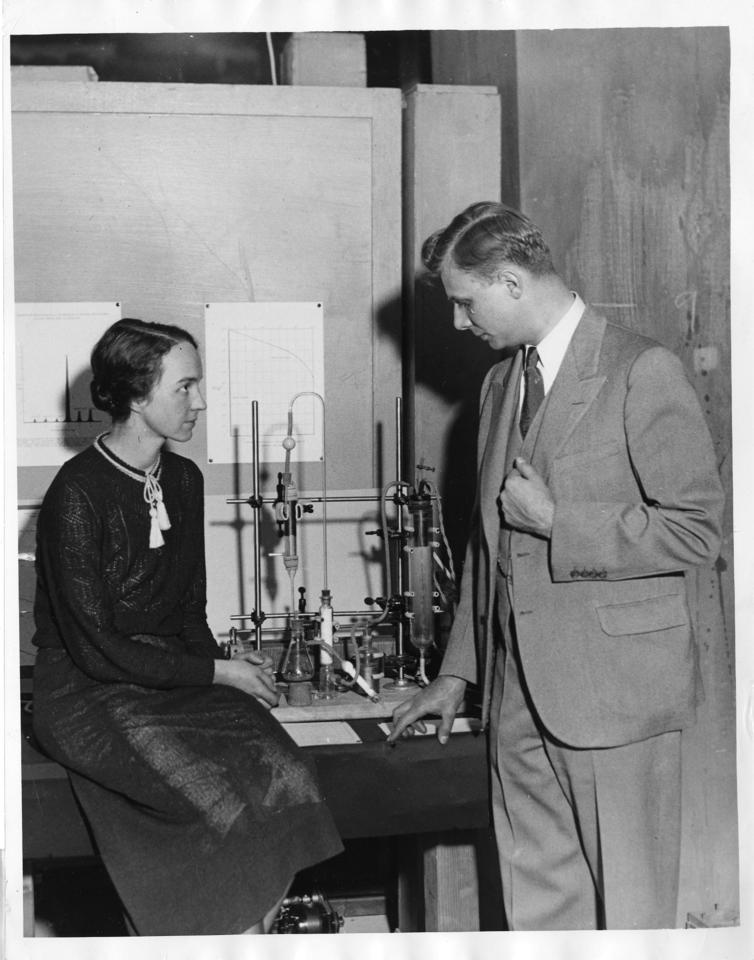
Chen Ning Yang and Tsung-Dao Lee
- 1957 Nobel Prize in Physics for “their penetrating investigation of the so-called parity laws which has led to important discoveries regarding the elementary particles.”
Until the 1950s, conventional physics wisdom dictated that the laws of nature would work the same both in this universe and its mirror opposite, an idea known as the “conservation of parity.” This means that if radioactive atoms of the same type were arranged so that one group was spinning clockwise and the other counterclockwise, the products of their decay—high-energy electrons—would escape the atom in the same direction despite the mirror flip of their spins. However, with the advent of particle accelerators in the 1950s, evidence began to mount that the conventional wisdom might not be true. In light of this, physicists Chen Ning Yang (Institute for Advanced Study) and Tsung-Dao Lee (Columbia University) theorized that parity would not be conserved in all cases and devised a number of experiments to demonstrate it.
In late 1956, working with Columbia University’s Chien-Shiung Wu, NIST researcher Ernie Ambler and his colleagues carried out experiments showing that the decay of the radioactive atom cobalt-60 violated the conservation of parity, proving Yang and Lee’s theory to be correct. The NIST laboratory was chosen as one of the experimental sites because of its low-temperature capabilities and the staff’s know-how in controlling the arrangements of atomic nuclei. Find out more about NIST's research that led to the fall of parity.
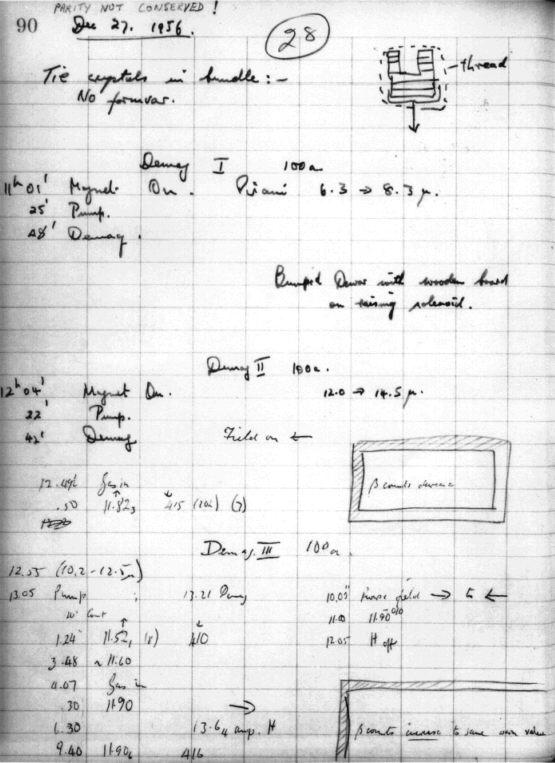
Willard Libby
- 1960 Nobel Prize in Chemistry for "for his method to use carbon-14 for age determination in archaeology, geology, geophysics, and other branches of science."
In the 1940s, University of Chicago chemist Willard Libby proposed a revolutionary way to determine the age of fossils and other carbon-based objects. Libby suggested that scientists could measure how much of the radioactive isotope known as carbon-14 those objects contained. But to determine their ages accurately, scientists needed good measurements of carbon-14’s half-life, the amount of time it takes for half of the isotope to radioactively decay.
In his 1960 Nobel Prize lecture, Libby mentioned new precision measurements of carbon-14 half-life being undertaken by Wilfrid Mann of NIST and Ingrid Olsson of Uppsala University in Sweden. Libby said, “We will all await the results of the half-life [research] of Dr. Mann and [Dr.] Olsson with great interest.”
These measurements, which ended up being highly successful, were important because there had previously been some conflicting results on carbon-14’s half-life, threatening to skew the results of its applications, including radiocarbon dating.
In the 1960s, Mann and other NIST researchers, including Lloyd Currie, developed a standard reference material, consisting of oxalic acid from the sugar beet plant, with known quantities of C-14 that helped scientists make accurate radiocarbon dating measurements. “When this batch was depleted, NBS developed a reissue based on a sugar beet harvest of 1977,” says NIST scientist and historian Bert Coursey. “That SRM is still in stock and serves as the standard for all radiocarbon dating.”

Luis W. Alvarez
- 1968 Nobel Prize in Physics for “his decisive contributions to elementary particle physics, in particular the discovery of a large number of resonance states, made possible through his development of the technique of using hydrogen bubble chamber and data analysis.”
NIST scientists contributed to the design and early operation of the hydrogen gas bubble chamber. This bubble chamber, and the accompanying data-analysis techniques, helped scientists discover new “resonance states,” energy peaks that indicated the existence of extremely short-lived subatomic particles that result from the wreckage of atomic collisions. In his Nobel Prize lecture, Alvarez cited contributions from the NIST Boulder campus: “We were also extremely fortunate in being able to interest the cryogenic engineers at the Boulder, Colorado, branch of the National Bureau of Standards [the agency that later became NIST] in the project. Dudley Chelton, Bascomb Birmingham and Douglas Mann spent a great deal of time with us, first educating us in large-scale liquid-hydrogen techniques, and later cooperating with us in the design and initial operation of the big chamber.”
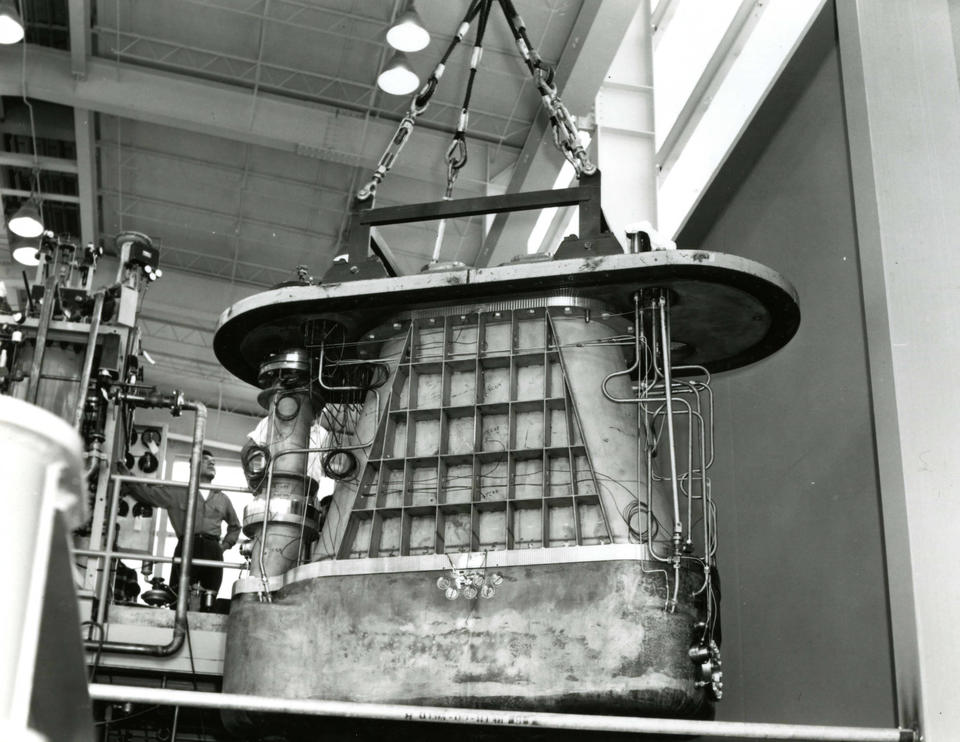
Gerd Binnig and Heinrich Rohrer
- 1986 Nobel Prize in Physics for “their design of the scanning tunneling microscope.”

In 1972, NIST scientists Russell Young, John Ward and Frederic Scire published a paper on a device they called the “topografiner,” which could image astoundingly small details a mere 30 atoms in size on metal surfaces. The device had a number of similarities to the Nobel-recognized scanning tunneling microscope, invented at IBM more than a decade later, which could image surfaces with atomic-scale resolution.
In their Nobel Prize lecture, Binning and Rohrer acknowledged the earlier NIST invention: “…Roughly two years later and shortly before getting our first images, we learned about a paper by [Russell] Young et al. where they described a type of field-emission microscope they called ‘topografiner.’ It had much in common with our basic principle of operating the STM, except that the tip had to be rather far away from the surface, thus on high voltage producing a field-emission current rather than a tunneling current and resulting in a lateral resolution roughly that of an optical microscope. They suggested to improve the resolution by using sharper field-emission tips, even attempted vacuum tunneling, and discussed some of its exciting prospects in spectroscopy. Had they, even if only in their minds, combined vacuum tunneling with scanning, and estimated that resolution they would probably have ended up with the new concept, Scanning Tunneling Microscopy. They came closer than anyone else.”
Learn more about the topografiner.
Robert C. Richardson
- 1996 Nobel Prize in Physics (with Douglas D. Osheroff and David M. Lee) “for their discovery of superfluidity in helium-3."
Richardson was a summer student at the National Bureau of Standards, which later became NIST. The program, known as the Summer Undergraduate Research Fellowship program, is still thriving today. Richardson writes: “In summers, while in college, I had a very interesting job with the National Bureau of Standards. I worked in the Electricity Division calibrating electrical resistance standards which power companies sent to NBS once each year. The NBS program for summer students was quite wonderful. First, we were well paid. Next, we actually did useful research. Finally, we attended a weekly seminar series which was given at our level of understanding. In my spare time at NBS, I read the scientific literature on electrical instrumentation and even met some of the authors of some of the classic articles. The experience at NBS gave me some notion of what a scientific research career could be.”
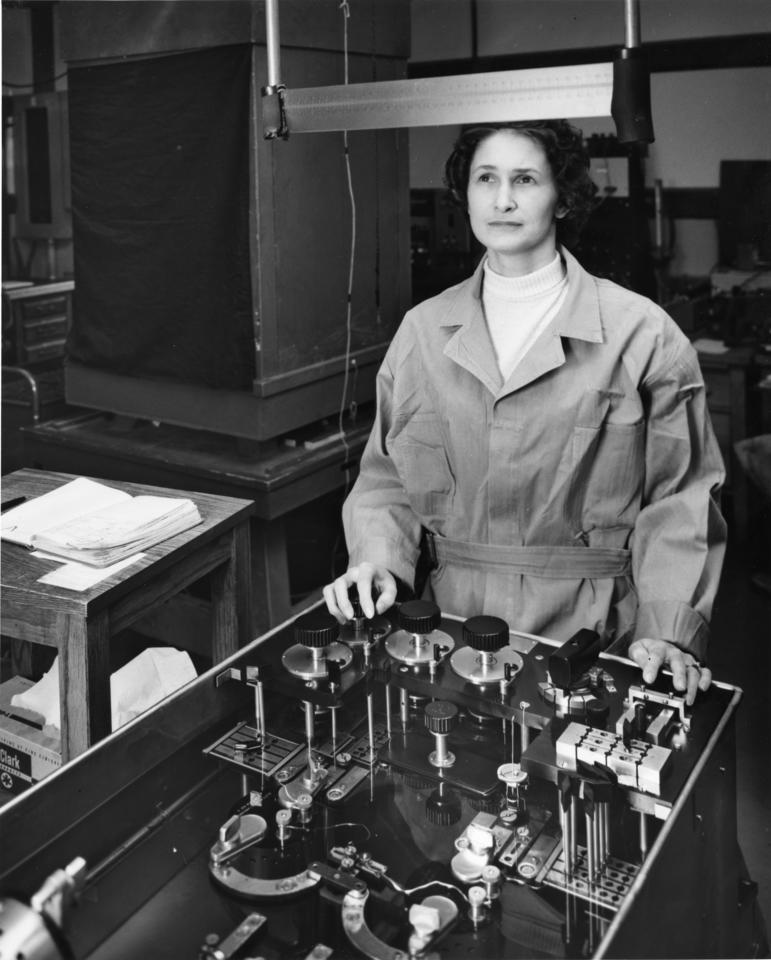
Robert Curl
- 1996 Nobel Prize in Chemistry (with Harold Kroto and Richard Smalley) "for their discovery of fullerenes."
While he was yet to become a NIST employee at the time, NIST chemist Dolphus Milligan was mentioned in the Nobel speech of Robert Curl, one of the co-discoverers of fullerenes, soccer-ball-shaped molecules made of carbon atoms. In his Nobel Prize biography, Curl wrote that Milligan helped him during a dangerous chemistry experiment in college: “If I had tried to do these experiments involving liquid hydrogen without help, I believe there is a good chance an explosion would have resulted. However, a fellow student, Dolphus Milligan, helped me tremendously with these experiments and with his aid I was able to collect the necessary data…”
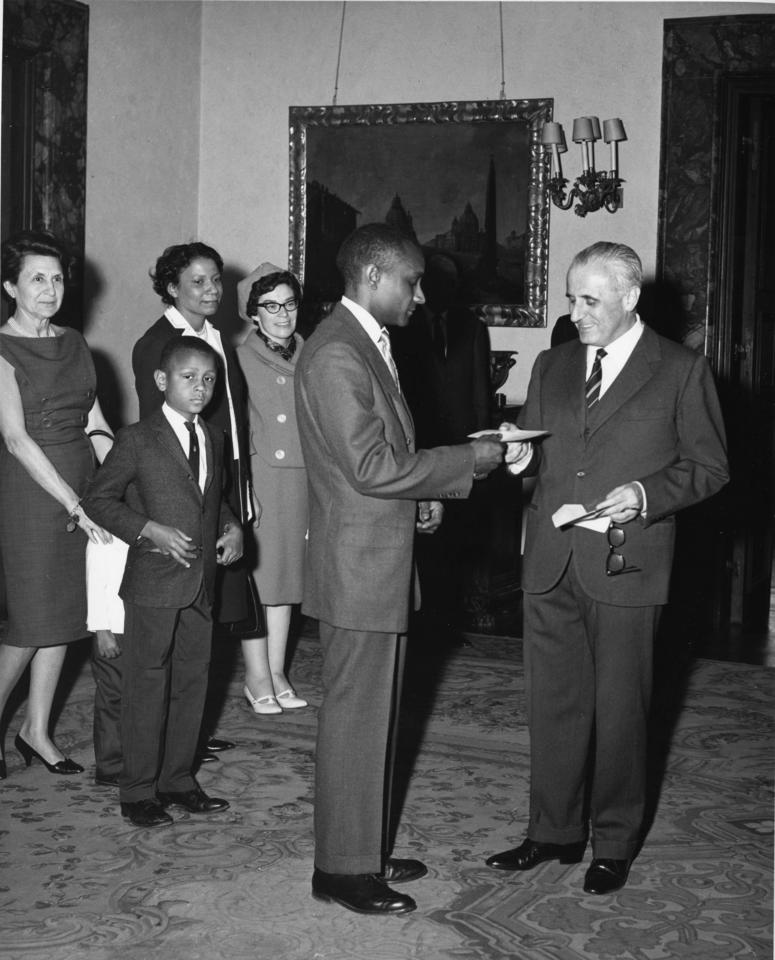
Albert Fert and Peter Grünberg
- 2007 Nobel Prize in Physics "for the discovery of giant magnetoresistance."
Albert Fert and Peter Grünberg independently discovered giant magnetoresistance (GMR), the magnetic phenomenon used for storing and reading data on today's hard disk drives. The Nobel Prize background material cites work done on GMR at NIST’s Center for Neutron Research (NCNR) by research groups that included NIST staff members Charles Majkrzak, Julie Borchers and Ross Erwin. Then as now, the neutron work takes advantage of the ability of neutrons to determine the detailed microscopic properties of magnetic materials. These scientists and other NIST researchers (including Boulder's Pavel Kabos) collaborated directly with Grünberg on more than seven joint publications. Many other NIST researchers advanced the GMR field, which eventually enabled the manufacture of inexpensive, high-capacity hard drives. Read more about NIST's contributions.
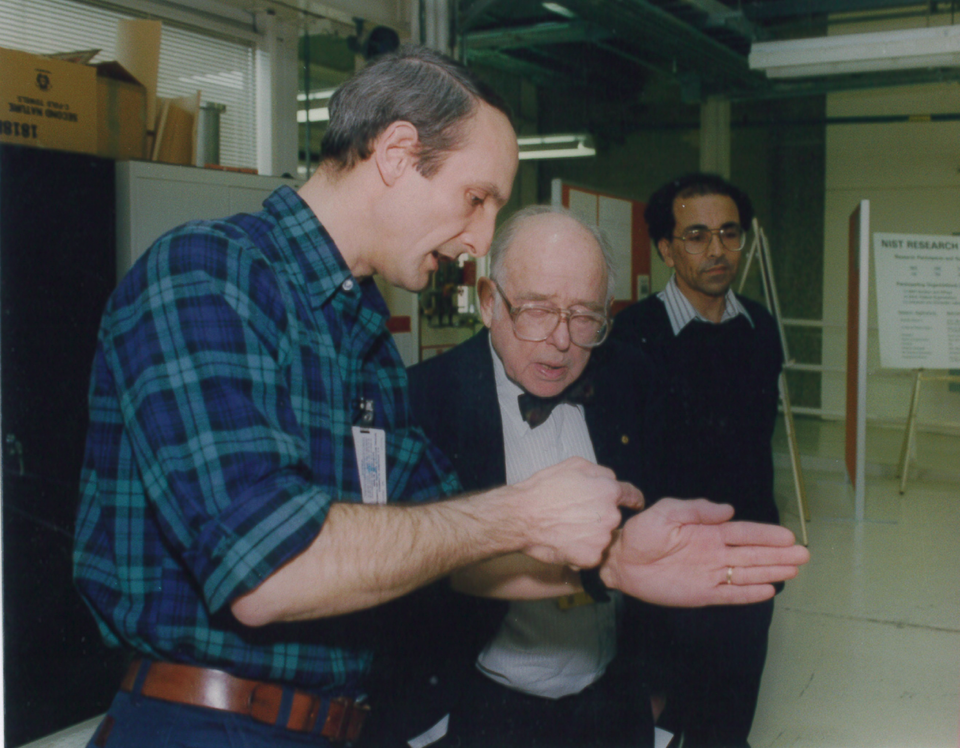
Organization for the Prohibition of Chemical Weapons (OPCW)
- 2013 Nobel Peace Prize "for its extensive efforts to eliminate chemical weapons."
NIST scientists developed new detection technologies that played a key role in the OPCW’s efforts to ban the production and use of chemical weapons. These technologies included AMDIS—the Automatic Mass spectral Deconvolution and Identification System—which enables low concentrations of chemical agents to be discovered in complex mixtures and reduce the risk of false detections. OPCW was recognized for their work overseeing the Chemical Weapons Convention, an international treaty signed by 190 nations that have pledged to rid the world of these weapons. Read more about NIST's work.
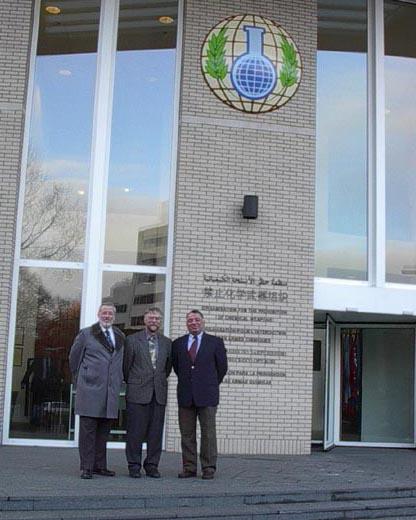
Takaaki Kajita and Arthur B. McDonald
- 2015 Nobel Prize in Physics "for the discovery of neutrino oscillations, which shows that neutrinos have mass"
Neutrinos are extremely abundant particles in our universe, but they are equally elusive. They are invisible and only interact occasionally with matter, such as the cores of atoms (nuclei) in materials such as heavy water. One question is whether neutrinos are massless like photons (particles of light) or if they have mass, which means they would constitute some of the universe’s mysterious “dark matter.” In 1987, McDonald visited NIST and worked with staff scientists to perform a series of highly sensitive measurements of uranium and thorium content in heavy water and acrylic samples.
In a letter from McDonald to then-NIST Director Ernie Ambler, “These measurements were critical to determine the feasibility of our proposed heavy water solar neutrino detector, and I am pleased to say that the preliminary results are very promising.” In addition to the Sudbury Neutrino Observatory where McDonald worked, NIST scientists also made scientific contributions to the Super Kamiokande neutrino detector where Kajita performed his experiments.
